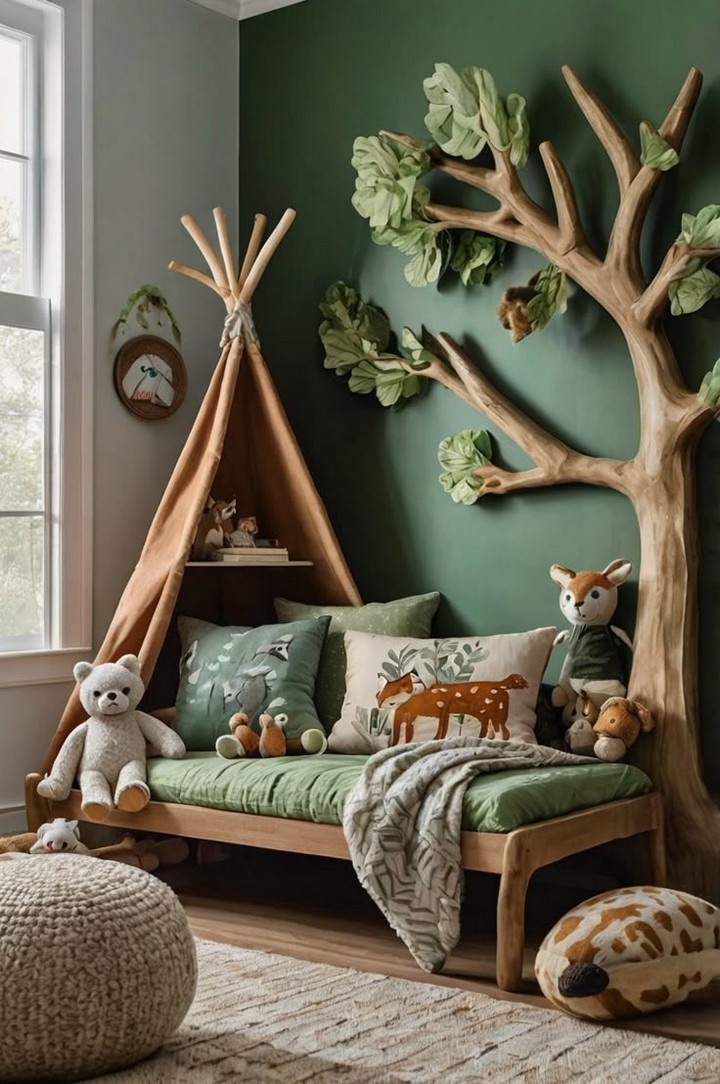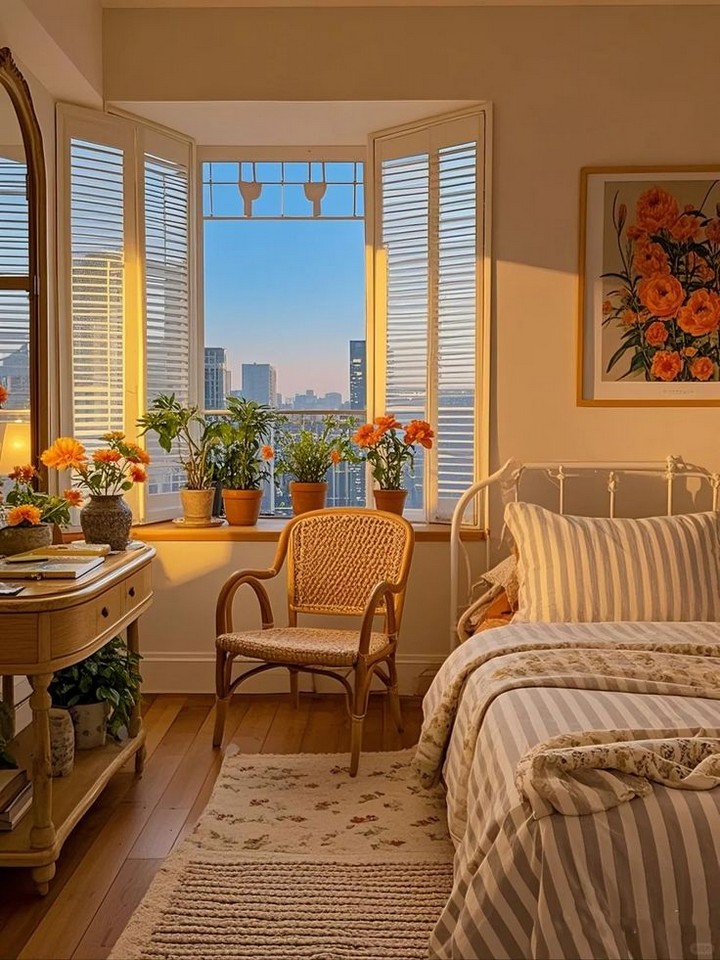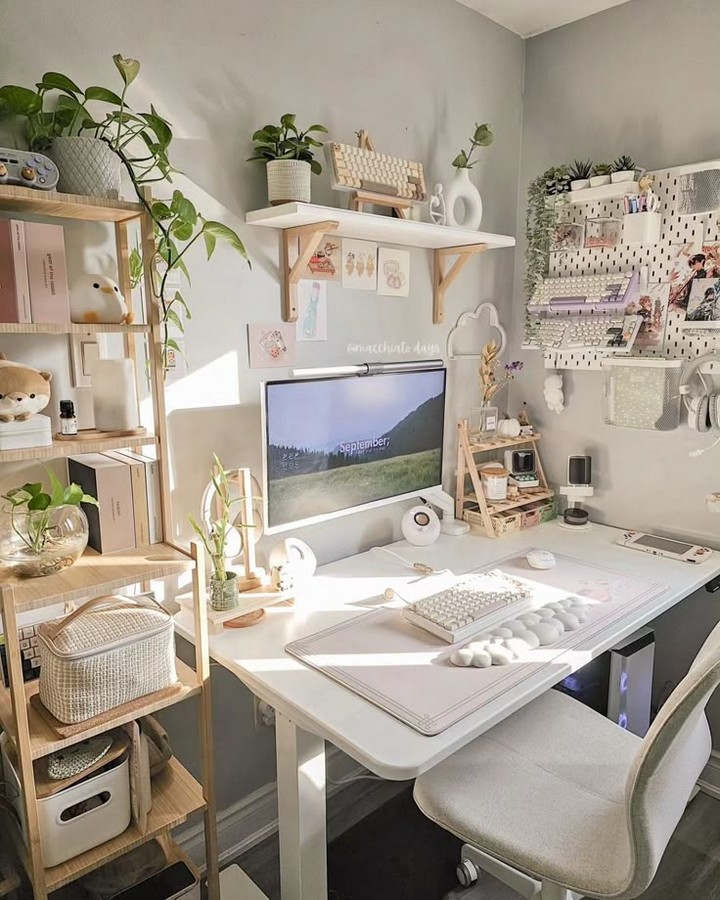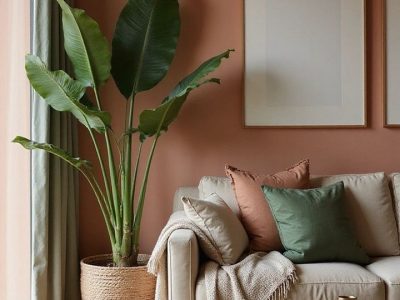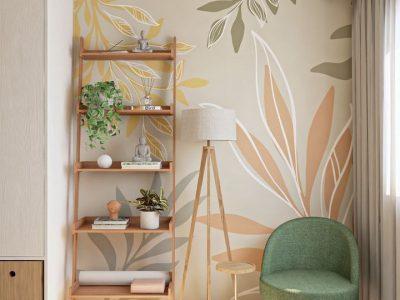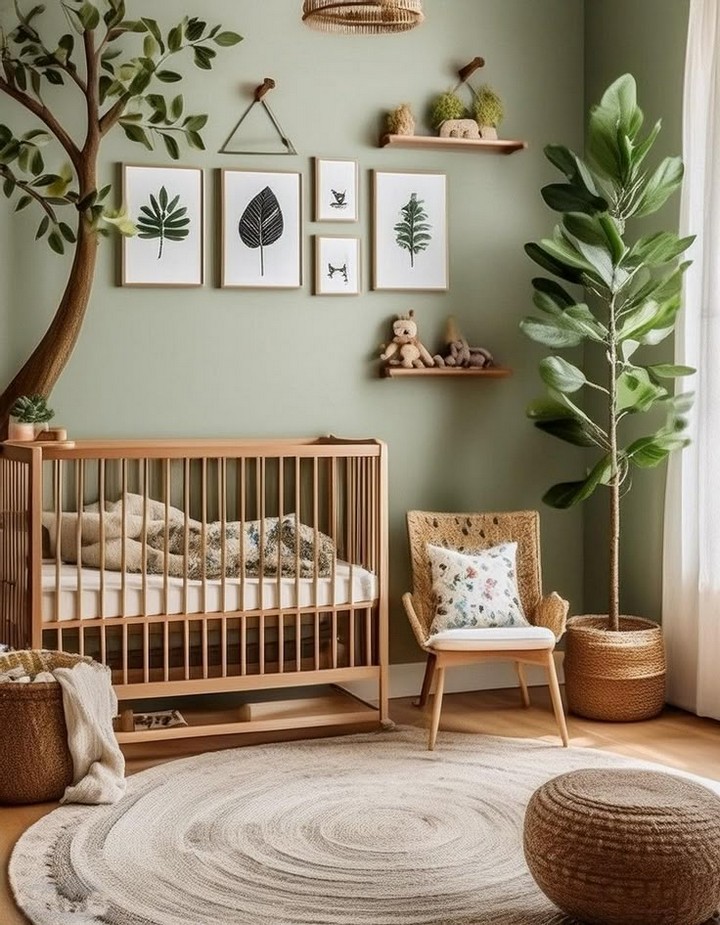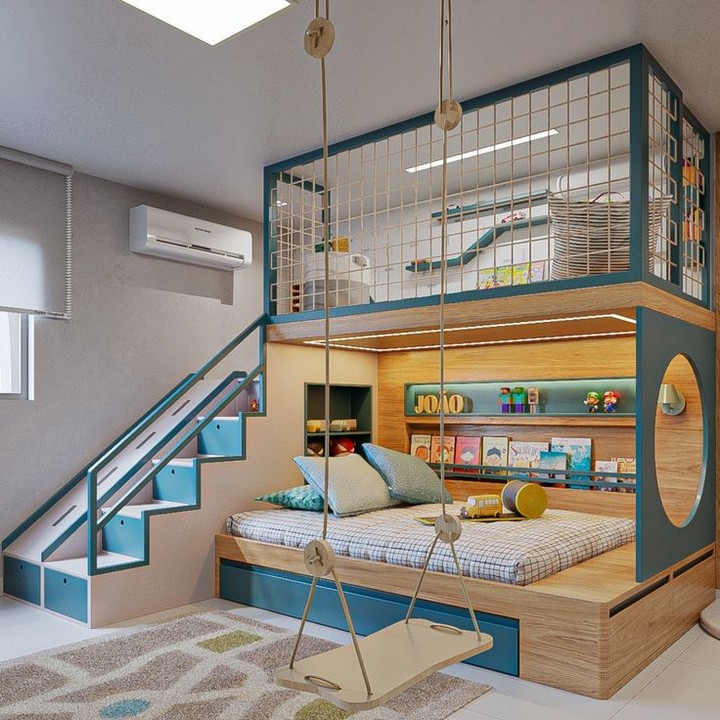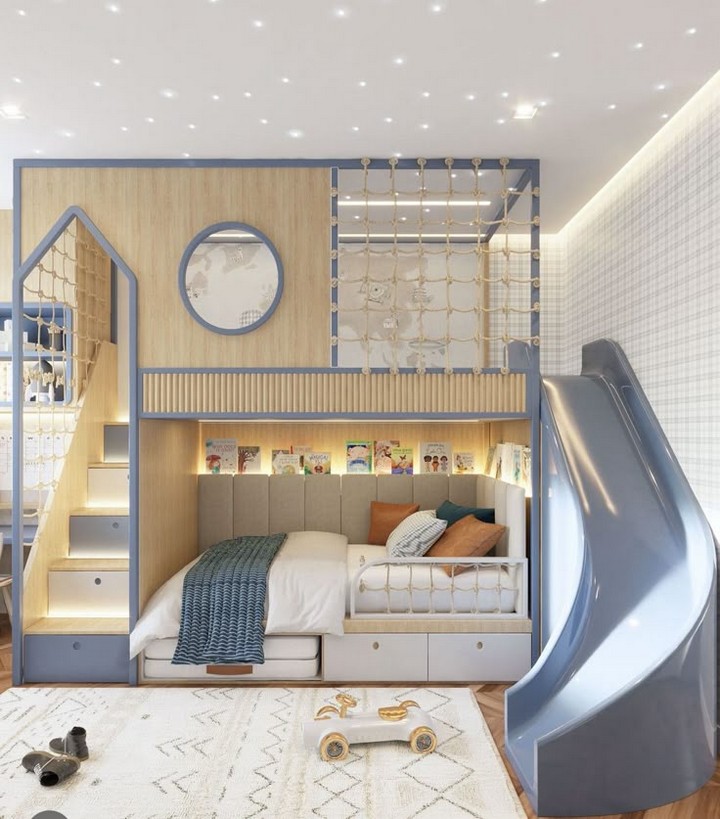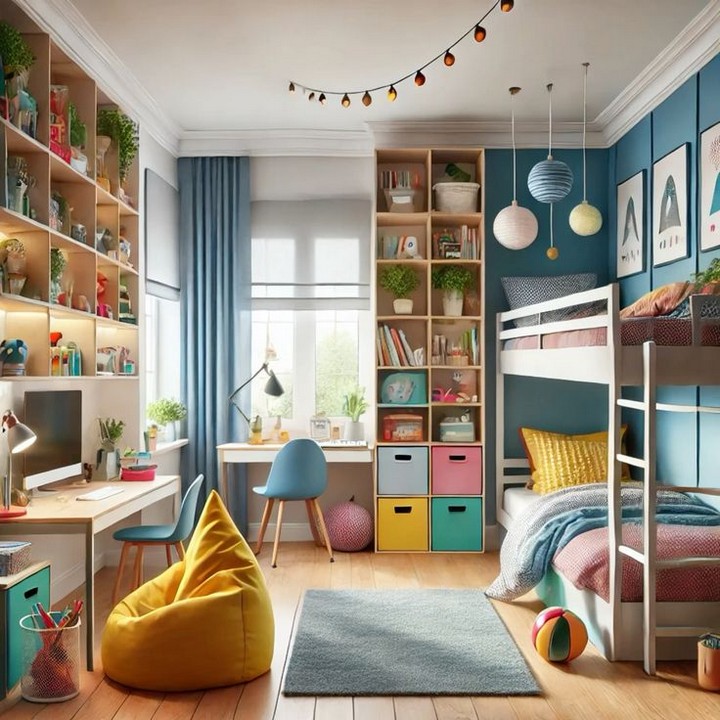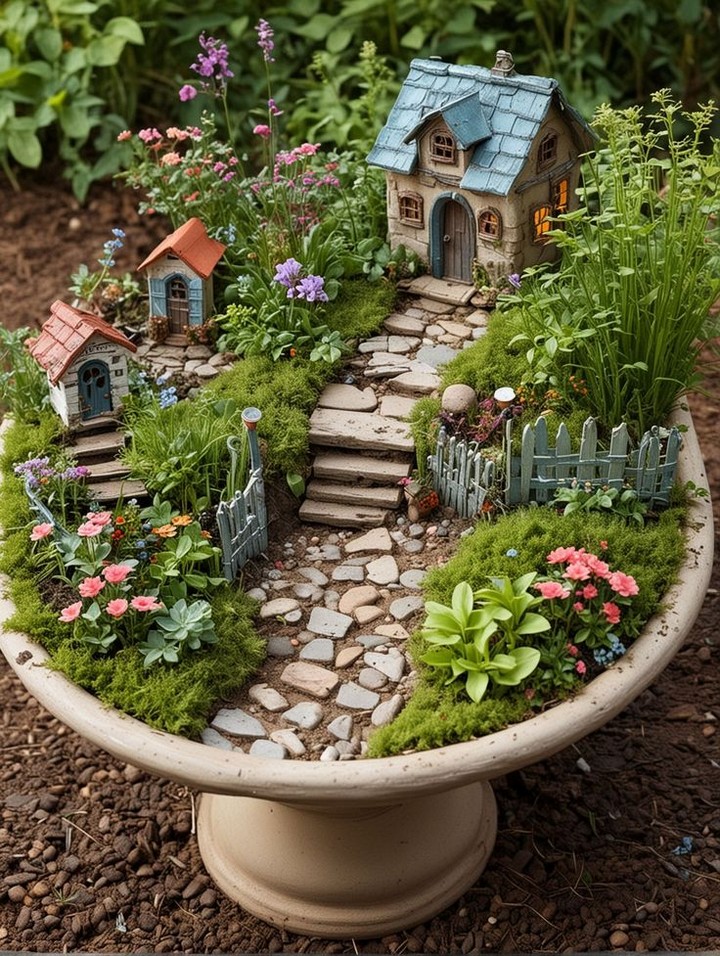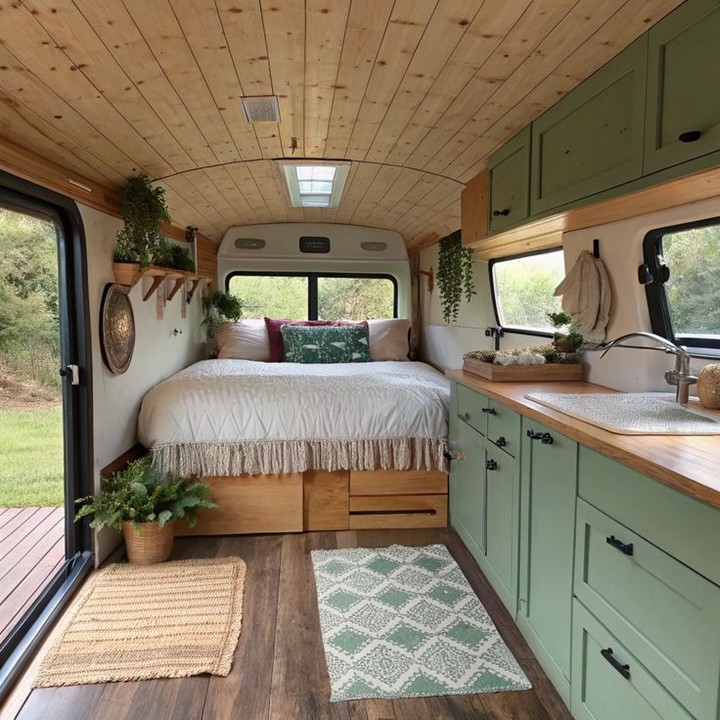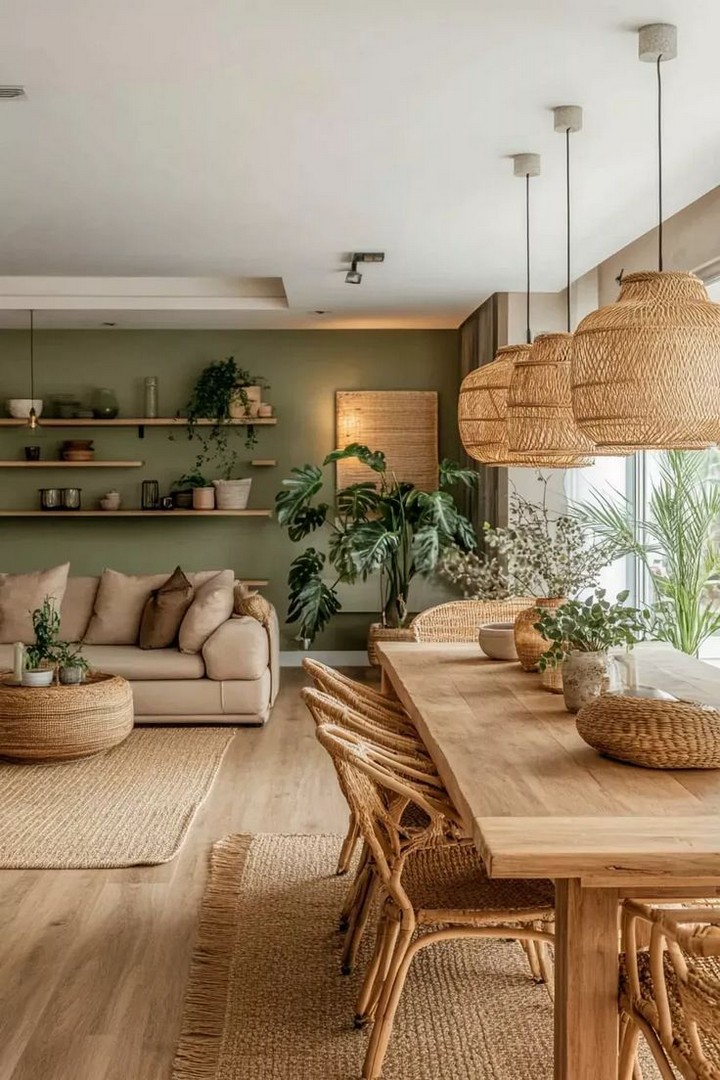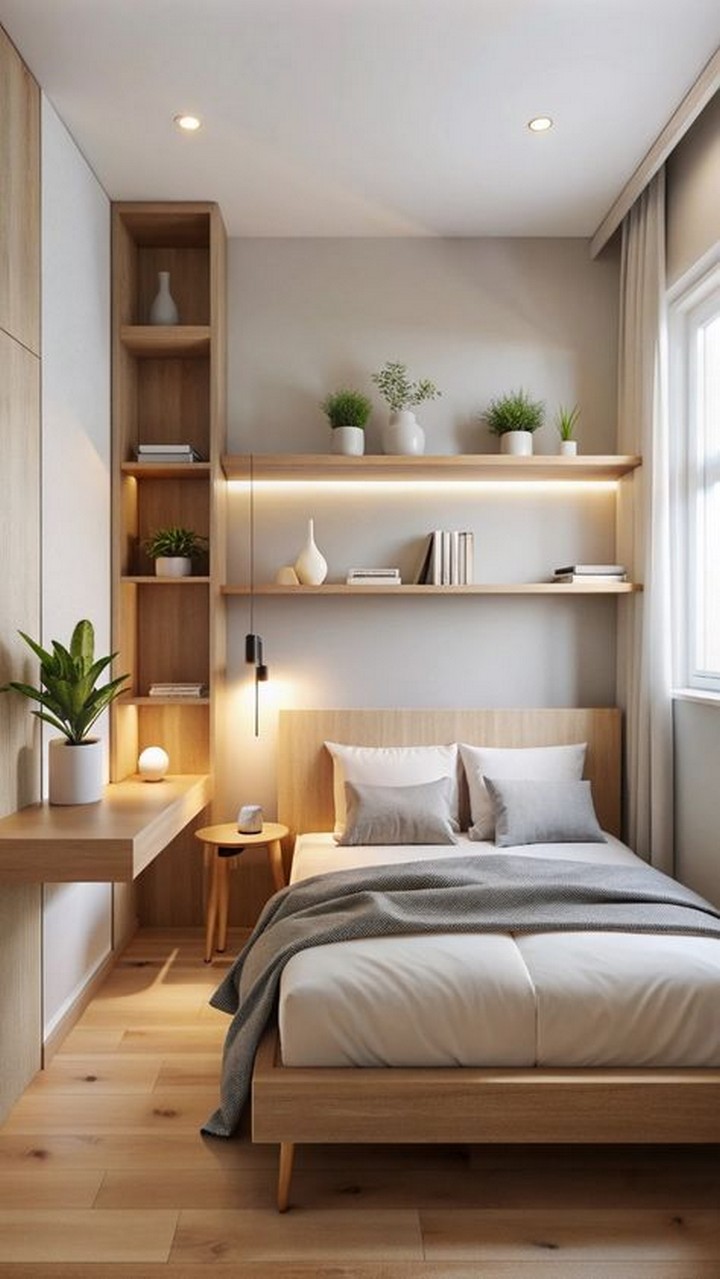In today’s increasingly digital world, parents are seeking ways to reconnect their children with the natural environment. One powerful approach is transforming children’s bedrooms into nature-inspired sanctuaries that spark imagination, promote well-being, and create lasting connections to the outdoors. From whimsical woodland themes to serene beach-inspired retreats, nature-based bedroom designs offer countless benefits for children’s development while creating spaces they’ll truly love.
Research consistently shows that exposure to nature even when simulated through design elements can reduce stress, improve concentration, and enhance creativity in children. A nature-themed bedroom creates an environment that:
- Stimulates imagination through organic shapes, textures, and storytelling elements
- Promotes restful sleep with calming natural color palettes
- Encourages environmental awareness by fostering appreciation for the natural world
- Creates versatile spaces that can evolve as your child grows
- Reduces screen time by offering engaging alternatives rooted in natural elements
Let’s explore the various ways you can bring the magic of the outdoors inside, creating spaces where imagination flourishes and connection to nature deepens.
Popular Nature-Inspired Themes for Kids’ Bedrooms

Enchanted Forest Retreats
Forest-themed bedrooms transport children to magical woodland worlds filled with towering trees, friendly creatures, and mystical elements. This versatile theme works for various age groups and can be adapted from whimsical fairy-tale settings for younger children to more sophisticated woodland retreats for older kids.
Key design elements:
- Mural or wallpaper featuring forest scenes with trees and woodland creatures
- Canopy bed with leafy or branch-like structures
- Natural wood furniture with organic shapes
- Mushroom-shaped stools or tables
- Soft, textured rugs resembling moss or forest floors
- String lights draped to mimic starlight filtering through trees
- Plush woodland animal companions like foxes, owls, or deer
Color palette: Deep greens, earthy browns, mushroom taupes, with touches of amber and berry tones
Underwater Adventures
Marine-themed bedrooms immerse children in the wonders of ocean exploration, from colorful coral reefs to mysterious deep-sea environments. This theme encourages curiosity about marine ecosystems while providing a soothing blue-based color scheme known to promote relaxation and sleep.
Key design elements:
- Ombré painted walls transitioning from light to deep blue
- Wave-patterned bedding and textiles
- Hanging fish or jellyfish decorations
- Porthole-style mirrors or windows
- Treasure chest toy storage
- Rope accents and natural shells as decorative elements
- Marine life wall decals or framed illustrations
Color palette: Various blues from aqua to navy, complemented by sandy neutrals, coral pink, and seafoam green
Safari Adventures
Safari-themed bedrooms capture the excitement of African wildlife adventures, introducing children to diverse animals and landscapes. This energetic theme balances stimulating design elements with cozy retreats, perfect for curious explorers.
Key design elements:
- Savanna landscape murals or wallpaper
- Canopy bed resembling a safari tent
- Woven baskets for storage
- Natural fiber rugs with geometric patterns
- Plush safari animals like lions, elephants, and giraffes
- Mosquito netting as decorative bed canopy
- Botanical prints featuring African plants and flowers
Color palette: Warm neutrals like sand and khaki, accented with sunset oranges and yellows, balanced with touches of green
Mountain Explorer Base Camps
For adventure-loving children, mountain-themed bedrooms create the perfect base camp for imaginary explorations. This theme combines rugged outdoor elements with cozy comfort, encouraging both active play and restful downtime.
Key design elements:
- Mountain range silhouette painted on walls or as a headboard
- Tent-like reading nook with cushions and pillows
- Map wallpaper or framed vintage maps
- Rustic wooden furniture with natural edges
- Storage trunks doubling as seating
- Constellation charts or night sky elements
- Camping-inspired lighting like lanterns
Color palette: Cool blues and grays of distant mountains, forest greens, with warm touches of campfire red and orange
Butterfly Gardens
Butterfly garden themes bring the delicate beauty of flowering meadows indoors, creating spaces that feel both magical and scientifically enriching. This theme works particularly well for children interested in insects and plant life.
Key design elements:
- Floral wallpaper or hand-painted flower murals
- 3D butterfly decorations fluttering across walls or hanging from ceiling
- Flower-shaped pillows and textiles
- Garden-inspired furniture with curved, organic lines
- Terrarium or indoor plants (choosing child and pet-safe varieties)
- Butterfly life cycle educational elements incorporated into decor
- Flower-shaped rugs or floor cushions
Color palette: Soft pinks and purples of wildflowers, meadow greens, with sunny yellow accents
Essential Elements for Nature-Inspired Kids’ Bedrooms

Natural Materials
The foundation of any nature-inspired space begins with authentic materials that connect children directly to the natural world through sight and touch.
Sustainable wood furniture brings warmth and organic texture while teaching children about renewable resources. Look for pieces made from:
- Bamboo (fast-growing and sustainable)
- Reclaimed or FSC-certified wood
- Unfinished or naturally finished wood showing grain patterns
Natural textiles add tactile comfort while minimizing synthetic materials:
- Organic cotton bedding and curtains
- Wool or jute rugs
- Linen throw pillows
- Hemp storage baskets
Stone and clay elements incorporate earth-based materials:
- Stone-look bookends
- Ceramic planters
- Clay crafts made by your child
- River stone sensory bins
Biophilic Design Elements
Biophilic design—incorporating elements that satisfy our innate need to connect with nature—has been shown to improve cognitive function, reduce stress, and enhance creativity in children.
Living plants bring literal life into the space while improving air quality:
- Child-safe, low-maintenance options like spider plants, Boston ferns, or succulent gardens
- Hanging plants for visual interest at different heights
- Small herb gardens for sensory exploration (mint, lemon balm, lavender)
- Plant care routines that teach responsibility
Natural light optimization supports healthy circadian rhythms:
- Sheer natural-fiber curtains that filter rather than block sunlight
- Strategically placed mirrors to amplify available natural light
- Light therapy lamps for northern exposures or darker months
- Nature-scene nightlights for evening transitions
Water elements bring the calming effects of this essential resource:
- Small, secure tabletop fountains (for older children)
- Ocean wave projectors or sound machines
- Bubble tubes for sensory comfort
- Artwork featuring streams, lakes, or oceans
Nature-Inspired Color Palettes
Color choices significantly impact a room’s atmosphere and can either energize or calm a child depending on the palette selected.
For active play spaces:
- Forest greens paired with sunny yellows
- Sky blues with cloud whites
- Vibrant flower-inspired hues like wildflower purple and poppy red
For rest and relaxation:
- Soft sage green with lavender accents
- Sandstone neutrals with pale blue
- Muted woodland tones of moss, mushroom, and bark
Application techniques:
- Ombré walls mimicking sunrise or sunset
- Color blocking to create landscape-inspired sections
- Painted ceilings resembling sky or tree canopy
- Strategic accent colors on architectural features
Sensory Integration Through Natural Elements
Nature-inspired bedrooms offer perfect opportunities to incorporate sensory elements that support neurological development and provide comfort.
Visual stimuli:
- Nature photography at child height
- Mobiles featuring birds, butterflies, or leaves
- Kaleidoscopes for exploring natural patterns
- Light and shadow play through branch-like window films
Tactile experiences:
- Sensory bins filled with (safe) natural materials like smooth stones, pinecones, or sand
- Textured wallpaper with subtle leaf or bark patterns
- Variety of natural fabric textures in bedding and cushions
- Nature collection displays with supervised touching opportunities
Auditory elements:
- Wind chimes near windows
- White noise machines with rainfall or forest sounds
- Musical instruments made from natural materials
- Quiet corners with nature storytelling recordings
Olfactory connections:
- Lightly scented drawer liners with natural fragrances like lavender or cedar
- Essential oil diffusers (used sparingly and safely)
- Fresh flowers or herbs in small arrangements
- Natural beeswax candles (for parent use only during story time)
DIY Nature-Inspired Projects for Kids’ Bedrooms

Involving children in creating elements for their nature-inspired bedrooms deepens their connection to the space while developing creativity and fine motor skills.
Pressed Flower Wall Art
Materials needed:
- Wildflowers and leaves collected during family walks
- Heavy books for pressing
- Floating frames or shadow boxes
- Acid-free paper
- Clear-drying craft glue
Instructions:
- Collect flowers and leaves, selecting flat specimens that will press well
- Place between sheets of absorbent paper inside heavy books for 2-3 weeks
- Arrange dried specimens on acid-free paper in pleasing patterns
- Carefully secure with tiny dots of clear-drying glue
- Mount in floating frames to preserve delicate items
- Create a gallery wall of seasonal collections
Branch Mobiles
Materials needed:
- Interesting fallen branches or driftwood
- Natural twine or fishing line
- Collected natural items (feathers, small pinecones, shells)
- Non-toxic clear finish (optional)
- Ceiling hook for hanging
Instructions:
- Clean and dry branches thoroughly
- Apply light clear finish if desired for durability
- Tie twine in various lengths to create hanging points
- Attach collected natural items securely
- Balance mobile by adjusting item placement
- Hang at a safe height where air movement will create gentle motion
Nature Discovery Table
Materials needed:
- Small table or shelf dedicated to rotating displays
- Clear jars or containers
- Magnifying glass
- Nature identification books appropriate for child’s age
- Notebook for observations
- Collected specimens (with permission from appropriate areas)
Instructions:
- Set up table in well-lit area of the bedroom
- Create a seasonal display with found natural objects
- Include age-appropriate scientific tools for exploration
- Rotate items monthly to maintain interest and reflect seasonal changes
- Encourage documentation through drawings or simple notes
Storage Solutions for Nature-Themed Bedrooms

Thoughtful storage solutions maintain organization while enhancing the nature-inspired aesthetic.
Tree Trunk Bookshelves
Tree-shaped bookshelves combine function with thematic design, encouraging reading while reinforcing the nature motif. Options range from wall-mounted branch shelves to freestanding tree silhouette units with branches forming the shelves.
Animal-Inspired Organization
Storage containers shaped like woodland creatures, safari animals, or sea life make organization playful:
- Bear-shaped hampers with ears as handles
- Fish-shaped bins for toys
- Turtle-shaped containers with removable shell lids
- Owl-themed jewelry organizers with wing compartments
Natural Material Storage Systems
Incorporating storage made from natural materials maintains design cohesion:
- Rattan baskets in graduated sizes
- Bamboo dividers for drawer organization
- Linen storage bags with botanical prints
- Wooden crates that can be stacked or used separately
Display Solutions for Nature Collections
Children naturally collect treasures from outdoor adventures. Create designated display areas that organize these items while making them design features:
- Shadow boxes for special finds labeled with location and date
- Rotating display shelves for seasonal discoveries
- Science-style specimen jars for interesting (non-living) finds
- Wall-mounted collection boards with nature theme categories
Sustainable and Eco-Friendly Approaches

Nature-inspired bedrooms provide excellent opportunities to introduce children to sustainability concepts through thoughtful design choices.
Upcycled Furniture
Giving new life to existing pieces reduces waste while creating unique elements:
- Dresser transformed with botanical decoupage
- Headboard created from salvaged wooden doors
- Nightstand made from stacked vintage suitcases
- Reading chair reupholstered in nature-printed fabrics
Non-Toxic Finishes and Materials
Prioritize child and environmental safety with natural alternatives:
- Milk paint or water-based zero-VOC paints for walls and furniture
- Beeswax or plant-based furniture polishes
- Untreated solid wood furniture over particleboard
- Natural fiber rugs without synthetic backing
- Organic mattresses and bedding when possible
Energy Efficiency Considerations
Integrate eco-friendly features that reduce environmental impact:
- LED lighting fixtures resembling natural elements
- Solar-powered night lights or reading lamps
- Window treatments that provide insulation
- Smart power strips to eliminate phantom energy use
- Ceiling fans with leaf-shaped blades for air circulation
Teaching Sustainability Through Design
Use bedroom design elements as starting points for environmental education:
- Small recycling station with nature-themed sorting bins
- Water conservation reminders in bathroom areas
- Energy usage monitors with child-friendly displays
- Nature care books integrated into bedtime reading
- Window bird feeders or butterfly attracting plants to observe local wildlife
Adapting Nature Themes for Different Age Groups

Nature-inspired designs can evolve with your child, adapting to changing interests and developmental needs.
Toddlers and Preschoolers (Ages 2-5)
For the youngest children, focus on simple representations, vibrant colors, and sensory-rich elements:
- Oversized friendly animal motifs
- Simple landscape murals with rolling hills or fluffy clouds
- Nature-themed play areas with small logs, soft “rocks,” or tent structures
- Durable, washable natural materials that withstand exploration
- Changing table areas integrated into the nature theme
Safety considerations include securing all furniture to walls, avoiding small decorative items that could be choking hazards, and using cordless window treatments.
Elementary Age Children (Ages 6-9)
As children develop interests and hobbies, integrate educational elements and more detailed nature representations:
- More complex mural scenes with wildlife in natural habitats
- Designated areas for nature collections with proper storage
- Field guide books and exploration tools appropriate for age
- Craft areas for nature-inspired projects
- Themed reading nooks that encourage outdoor literature
Include the child in design decisions, allowing them to select favorite natural elements or themes that spark their curiosity.
Tweens and Early Teens (Ages 10-14)
Adapt nature themes to reflect growing sophistication and changing interests:
- Subtle nature motifs rather than character-based designs
- Abstract representations of natural elements (geometric mountain patterns, stylized leaf prints)
- Study areas incorporating natural materials and biophilic design principles
- Gaming or technology areas balanced with natural elements
- Personalized spaces for displaying nature photography or artwork
Allow increased personalization while maintaining the fundamental connection to natural elements through materials, color schemes, and select theme elements.
Complementary Technology Integration

While nature-inspired bedrooms aim to connect children with the natural world, thoughtfully integrated technology can enhance this connection rather than detract from it.
Nature Monitoring and Citizen Science
Technology that connects children to the natural world can enhance bedroom themes:
- Window bird feeder with camera for watching and identifying birds
- Weather station with indoor display showing outdoor conditions
- Citizen science project participation using bedroom-based observation stations
- Seasonal phenology tracking displays showing natural changes
Educational Technology with Nature Focus
Digital tools can complement nature themes when chosen carefully:
- Digital microscopes for examining collected specimens
- Nature soundscape players programmed with authentic wildlife sounds
- Constellation projectors showing accurate night sky representations
- Interactive field guides on tablets for identifying discoveries
Creating Technology Boundaries
Design bedroom layouts that naturally separate technology use from rest areas:
- Tech-free zones clearly defined with natural barriers
- Charging stations located away from sleeping areas
- Screen-time trackers integrated into nature themes (like hourglass timers)
- Nature-based alternatives prominently displayed when digital entertainment is limited
Budgeting for Nature-Inspired Bedrooms

Creating magical nature spaces doesn’t require extravagant spending. Plans can be scaled to various budgets while maintaining the core benefits.
High-Impact, Low-Cost Elements
Focus investment on elements that deliver significant visual impact:
- Paint transformations (ombré techniques, mountain silhouettes, tree outlines)
- DIY wall murals using projectors and basic painting skills
- Natural material collections displayed artfully (driftwood, interesting stones, pinecones)
- Repurposed furniture with nature-inspired modifications
- Strategic lighting that creates dramatic natural effects
Worth-the-Splurge Items
Some investments provide lasting value for nature-themed bedrooms:
- Quality wooden furniture that will transition through multiple design iterations
- Museum-quality educational displays that maintain interest over years
- High-quality organic bedding that improves sleep quality
- Exceptional lighting fixtures that define the room’s character
- Statement wallpaper for accent walls that anchor the design
Phased Implementation Strategies
Break projects into manageable phases aligned with budget availability:
- Begin with color scheme and basic paint transformations
- Add core furniture pieces, prioritizing the bed and primary storage
- Integrate lighting elements that enhance the natural theme
- Add textiles and soft furnishings that reinforce the concept
- Complete with decorative elements and personalized touches
Expert Tips for Successful Nature-Themed Bedrooms

Designers specializing in children’s spaces offer these professional insights for creating successful nature-inspired bedrooms:
Balance Stimulation and Calm
Nature contains both energizing and soothing elements—incorporate both intentionally:
- Designate active play areas with energizing design elements (bright colors, interactive features)
- Create clearly defined rest spaces with calming natural elements (soft textures, gentle colors)
- Use furniture arrangement to naturally separate activity zones
- Include transitional elements that help signal shifting from play to rest
Consider Maintenance Realistically
Beautiful nature-inspired spaces should remain beautiful with reasonable maintenance:
- Choose washable paint finishes in areas where children touch walls frequently
- Select natural materials that develop character rather than damage when worn
- Implement easy organization systems that children can maintain independently
- Include storage solutions for seasonal rotations of decorative elements
Future-Proof Where Possible
Design with adaptation in mind to extend the bedroom’s relevance:
- Choose furniture with classic lines that can transition between themes
- Install wall treatments that can be easily changed (removable wallpaper, frame systems)
- Select color schemes from nature that grow with the child rather than age-specific palettes
- Create flexible spaces that can be reconfigured as needs change
Embrace Imperfection
The natural world is beautifully imperfect—allow this to inform the design approach:
- Celebrate the wabi-sabi aesthetic of natural materials
- Include child-created elements without requiring perfection
- Allow space for evolving collections and changing interests
- Focus on the sensory experience rather than picture-perfect arrangements
Seasonal Refreshes for Nature-Themed Bedrooms

Keep nature-inspired bedrooms engaging by incorporating seasonal changes that reflect the world outside.
Spring Renewal
Refresh spaces with elements that celebrate growth and new beginnings:
- Swap heavy winter bedding for lighter fabrics with botanical prints
- Add flowering plant displays (real or high-quality artificial)
- Introduce pastel accents inspired by spring blossoms
- Create window displays for observing returning birds or growing plants
- Rotate nature collections to feature spring findings
Summer Adventures
Transform the space to reflect summer exploration and abundant nature:
- Introduce elements of water play and beach findings
- Create night sky observation stations for longer evening light
- Add tropical or vacation-inspired accent pieces
- Display summer nature journals or field guides
- Incorporate cooling elements like lighter fabrics and natural ventilation focus
Autumn Transitions
Embrace the changing season with warm, cozy adaptations:
- Introduce amber lighting elements mimicking autumn sunlight
- Add leaf-inspired textiles in rich fall colors
- Create displays for autumn collections (colorful leaves, acorns, pinecones)
- Include seasonal sensory elements like apple or cinnamon scents
- Transition to warmer textures in bedding and floor coverings
Winter Wonders
Maintain connection to nature even during indoor months:
- Emphasize lighting with star projectors or twinkle light canopies
- Create cozy reading nests with additional soft pillows and blankets
- Display winter nature items like evergreen boughs or snowflake decorations
- Add hibernation-inspired elements to sleeping areas
- Include winter wildlife watching stations near windows
Concluding Thoughts: The Lasting Impact of Nature-Connected Spaces

Creating nature-inspired bedrooms offers benefits extending far beyond aesthetics. These thoughtfully designed spaces:
- Build fundamental connections to the natural world that can foster lifelong environmental stewardship
- Provide daily exposure to elements known to reduce stress and anxiety
- Create rich sensory environments that support neurological development
- Offer opportunities for education and discovery integrated into everyday life
- Encourage imagination and creativity through organic forms and natural storytelling
By bringing elements of forests, oceans, mountains, and meadows into children’s personal spaces, parents provide not just beautiful surroundings but also important developmental support. These nature connections, established early through thoughtful design, can nurture children’s innate biophilia—their instinctive bond with the natural world—providing benefits that extend throughout their lives.
Whether implementing comprehensive transformations or making small nature-inspired changes, each element that connects children to the natural world contributes to their well-being while creating truly special spaces they’ll remember long into adulthood.
Ready to Create Your Child’s Nature-Inspired Haven?

We’d love to see how you incorporate these ideas into your children’s spaces! Share your nature-inspired bedroom transformations in the comments below, or tag us in your social media posts. Have questions about adapting these concepts to your specific space? Join our community forum where design experts and fellow parents offer personalized advice and inspiration.
For more ideas on creating child-friendly spaces that nurture development and creativity, explore our related articles on sustainable playroom design, outdoor learning environments, and nature-based playspaces. Subscribe to our newsletter for seasonal update ideas and exclusive DIY project tutorials delivered straight to your inbox!

